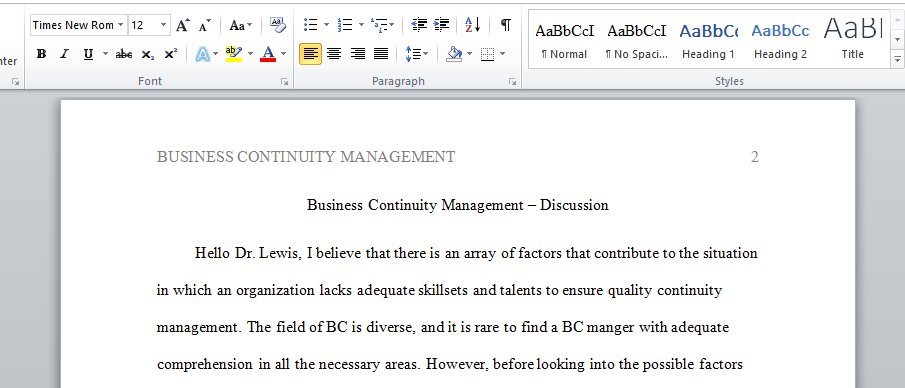Business continuity management as an organizational aspect
Business continuity management as an organizational aspect entails risk management, disaster recovery, and human resource consistency as significant concepts of the sector. The managers in the said sector are subject to intense coordination between all the stakeholders in the company given that the defining activities of business continuity touch on all the operational divisions of the company. The success or failure of business continuity policies in an organization depends on the fluidity of their implementation in the various sectors of the company (Watters & Watters, 2014). As a consequence, the significant challenges encountered by BC managers are characterized by difficulties in coordination of the multiple stakeholders of the company.
Challenges of BC Integration
The business continuity manager has to complete the job requirements needed for the position while considering the various aspects of business continuity under his or her guidance. As the BCM, there are specific roles and responsibilities associated with the office. Successful implementation of the business continuity plans depends on the ability of the BCM to tackle the needs of the purposes individually. The roles include business continuity management, information technology, business, senior management, and audit. In each of the said roles, the individual is expected to the organization has a proven ability to recover, deliver disaster recovery systems, approve the BCM policy and harmonize the BCM program with the business needs and also those of external shareholders (Torabi et al., 2016). Additionally, the role requires the manager to identify the business needs and prepare plans for their realization and sustenance.
Consequently, there are diverse challenges associated with their titles as continuity managers and are mainly manifested in the integration of their varied roles. For one, the need for clear communication and organized coordination is quite heightened to increase chances of implementation success. All the six characters are designed to perform specific functions which collectively contribute to overall success. Presence of failure or manifestation of deficit in any of the roles undermines the manager’s ability to deliver the required results. In addition to the higher levels of coordination required, the composition of the company’s labor force is devoid of adequately skilled labor. A BC manager with adequate comprehension of the diverse fields they are required to be responsible is rare, and therefore such people are either overworked, or the BCM is forced to utilize inferiorly qualified workers, minimizing the quality of work therein.
BC Practices for Enhancing Team Spirit
The standard position regarding business continuity practices involves a total of six recommended steps designed to improve business continuity. However, only two or three of those practices can inspire or enhance team spirit amongst the employees of the organization. Identification of the dependencies between the various departments involved for one increases the team spirit of various BC departments. The license ensures that roles are adequately defined, minimizing the instances of blurred boundaries, blanket responsibility ad instances of undercutting or undermining which frustrate team spirit (Boshyk, 2016). Also, the establishment of acceptable downtime for the recommended activities ensures a seamless operational method is established, which minimizes the number of conflicts within the organization.
Answer preview:

Words:277
